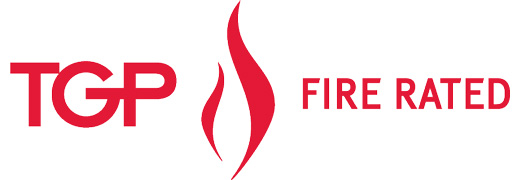The Future of Fire-Rated Glass and Framing
Performance Criteria and Building Codes
While fire-rated glass systems can be a boon to aesthetics, the primary reason for their specification is always to improve fire and life safety and meet building-code criteria. Building codes outline where fire-rated materials are required and spell out the necessary performance criteria. However, since fire and life safety codes and best practices differ depending on factors such as building height, occupancy group, and the location in the building where a given fire-rated material is to be used, building industry professionals are left with significant room for variance as they work within the parameters set forward in codes. To further complicate the matter, codes are regularly updated but not always adopted on a uniform schedule across jurisdictions.
For architects, this can make it challenging to navigate increasingly complex building design and performance requirements in areas with stringent fire and life safety code criteria. There are a few key ways to address these concerns and guide appropriate specification, including understanding common misconceptions and proper use. The main criteria in this category is the 2015 IBC.
Understanding Proper Use and Misuse
Fire-rated glass that provides protection other than intended could jeopardize the safety of building occupants. A big issue is using mismatched fire-rated glass and framing components that compromise the effectiveness of the system.
For instance, fire-rated glass needs to be installed into an appropriately rated frame for the required protection level. As an example, if you’re working with an application where building codes mandate the use of 60-minute or greater fire-resistant materials, specifying 45-minute fire-protective glass would be a mismatch for the assembly’s required protection level. This disconnect can also put occupants at risk if the fire-rated glazing fails before the frame, which would allow flames and smoke to spread throughout the building.
There are a couple of steps that can be taken to avoid this scenario.
- Verify that the fire-rated glass, framing, seal, and other components have the same or greater ratings than the required code minimums for the opening.
- Confirm that the fire-rated glass and frame provide the same type of protection (i.e., fire protection or fire resistance). The easiest way to confirm consistent ratings and required levels of defense against fire is simply to check the product label. IBC requirements mandate that the fire-rated glass product labels clearly state where it is suitable for use and whether it meets temperature-rise criteria. Of course, if there are still questions after referring to the label, it is always good practice to confirm with the manufacturer or supplier.
When specifying fire-resistant glazing assemblies, for instance, curtain walls or fire-rated glass floor systems, here too it is imperative to confirm with the manufacturer or supplier that the performance of the glass and frame systems match, ensuring that they have been tested and listed to work together as an assembly. As a way to simplify this process, some manufacturers offer complete systems from a single source, where all the components are designed and tested in the same assembly, thereby removing any concerns about inconsistent fire ratings diminishing effectiveness and failure to meet required fire safety standards.
Proper Use
As with any complex system, advanced fire-rated glass systems must use the specific supplied components (e.g., glass, framing, exterior caps, back framing members, seals, firesafing, etc.) in order to work properly and maximize benefits. A change to any part of the assembly, whether to achieve a different aesthetic or to cut costs, creates a higher probability of compromising the system’s ability to provide the required level of fire protection and meet overall safety standards.
If the design professional truly needs to find a more custom solution than what is specified in the manufacturer’s guidelines, it is wise to contact the manufacturer or supplier during the design process. Some manufacturers, in fact, will provide design assistance and consult in the development and testing of custom fire-rated systems.
Conclusion
The unfortunate truth is that thousands of commercial building fires occur each year in the United States. However, with incredible innovations abounding in the fire-resistive product market and the embrace of advanced materials as we’ve discussed, providing code-compliant fire and life safety for these structures does not have to mean compromising on aesthetic or daylighting goals. One final thought: It is always good practice to contact manufacturers for the latest specifications and uses. With the continued evolution of fire safety solutions, new technologies are constantly moving the needle in the direction in which these products and systems can add value, beauty, and safety to commercial and institutional buildings.

|
Technical Glass Products (TGP) is a recognized leader in the fire-rated glass and framing field, offering the FireLite® family of ceramic glazing, Pilkington Pyrostop® transparent wall panels, and Fireframes® fire-rated framing. The company provides AIA-registered continuing education, project consultation, product specifications, BIM models, CAD drawings, and rapid-response quoting.
|








